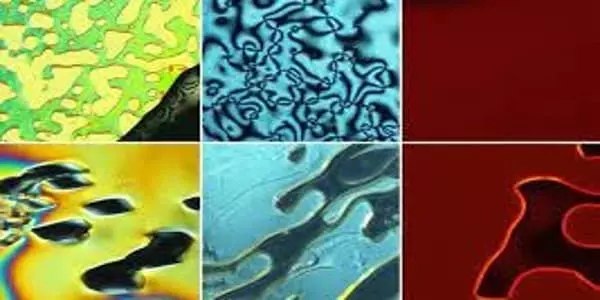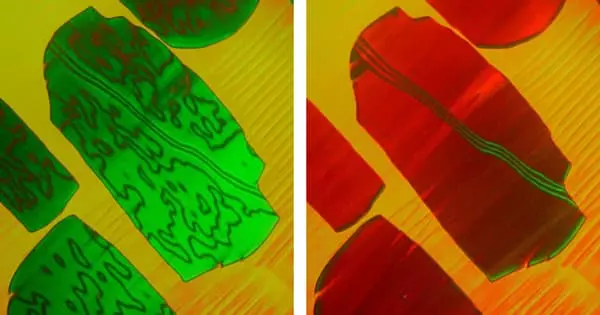An international team investigated a newly synthesized liquid-crystalline material with optoelectronic applications. At room temperature, simple rod-shaped molecules with a single center of chirality self-assemble into helical structures. The scientists were able to determine the pitch of the helical structure with high precision using soft X-ray resonant scattering at BESSY II. Their findings point to an extremely short pitch of only about 100 nanometres, which would allow for applications with extremely fast switching processes.
Although liquid crystals are not solids, some of their physical properties are directional, just like crystals. This is due to the fact that their molecules can arrange themselves into specific patterns. Flat screens and digital displays are two of the most well-known applications. They are based on liquid crystal pixels, the optical properties of which can be switched by electric fields.
Liquid crystals, which have been used in visual displays for over 50 years, can be electrically switched between two molecular arrangements: transparent and opaque. A newly developed liquid crystal can switch states faster than those currently in use. If the same acceleration can be achieved in materials that operate at lower, more practical temperatures, new types of rapidly responsive electro-optic devices, such as virtual reality displays, could emerge.
The material’s very short pitch makes it unique and promising for optoelectronic devices with very fast switching times. Furthermore, the EZ110/10 compound is thermally and chemically stable, and it is easily varied to produce structures with customized pitch lengths.
Dr. Smekhova
Some liquid crystals form cholesteric phases, in which molecules self-assemble into helical structures that vary in pitch and rotate to the right or left. “The pitch of the cholesteric spirals determines how quickly they react to an applied electric field,” explains Dr. Alevtina Smekhova, first author of the study, which has now been published in Soft Matter.
Conventional liquid-crystal displays (LCDs) make use of nematic materials, which have molecules with rod-like shapes. The molecules are free to move around as if they were in a traditional liquid, but their rod axes all point in the same general direction, similar to a crowd of people milling around, all with their heads pointing upward. This direction, which is defined by a parameter known as the director, influences whether polarized light passes through the material and, as a result, whether an LCD pixel is bright or dark.

Simple molecular chain
In this study, she and colleagues from the Academies of Sciences in Prague, Moscow, and Chernogolovka investigated EZL10/10, a liquid crystalline cholesteric compound developed in Prague. “Normally, such cholesteric phases are formed by molecules with multiple chiral centers, but in this case, the molecule has only one chiral center,” Dr. Smekhova explains. It consists of a single lactate unit in a simple molecular chain.
It is proposed to build a vertically aligned liquid crystal (LC) device with fast-switching LC molecules and excellent electro-optical properties. The proposed method uses a polyimide mixture to achieve the desired vertical alignment and a mesogenic photocrosslinker to achieve the fast LC response. To pre-tilt the LC molecules, the photocrosslinkers were photopolymerized by UV irradiation in an electric field. Furthermore, as the number of functional groups in the photocrosslinker increased, faster switching properties were observed due to improved pre-tilting.
The availability of flexible photonic modules to manage a variety of operations – such as signal routing, switching, and wavelength demultiplexing – in an integrated optics chip is a critical issue in the evolution of optical communication networks. Because of their large electro-optic response, mature and low-cost technology, low dielectric constant, and broadband transparency, liquid crystals are very appealing for signal processing in optical systems.
Ultrashort pitch
The team examined this compound with soft X-ray light at BESSY II and determined the pitch and space ordering of the spirals. This was the pitch’s shortest reported value to date: only 104 nanometres! This is twice as short as the previously known pitch of liquid crystal spiral structures. Further investigation revealed that the cholesteric spirals in this material form domains with characteristic lengths of about five pitches.
Outlook
“The material’s very short pitch makes it unique and promising for optoelectronic devices with very fast switching times,” Dr. Smekhova says. Furthermore, the EZ110/10 compound is thermally and chemically stable, and it is easily varied to produce structures with customized pitch lengths.
















